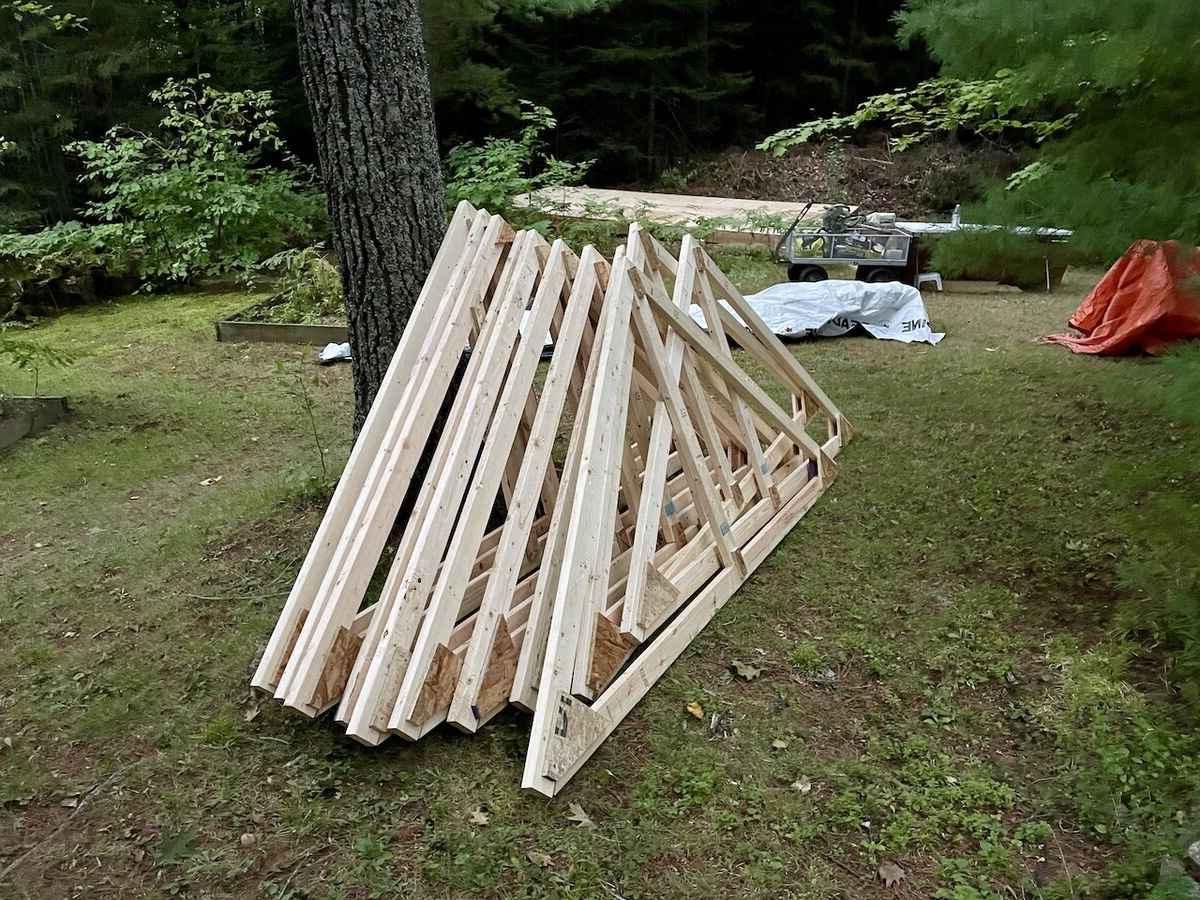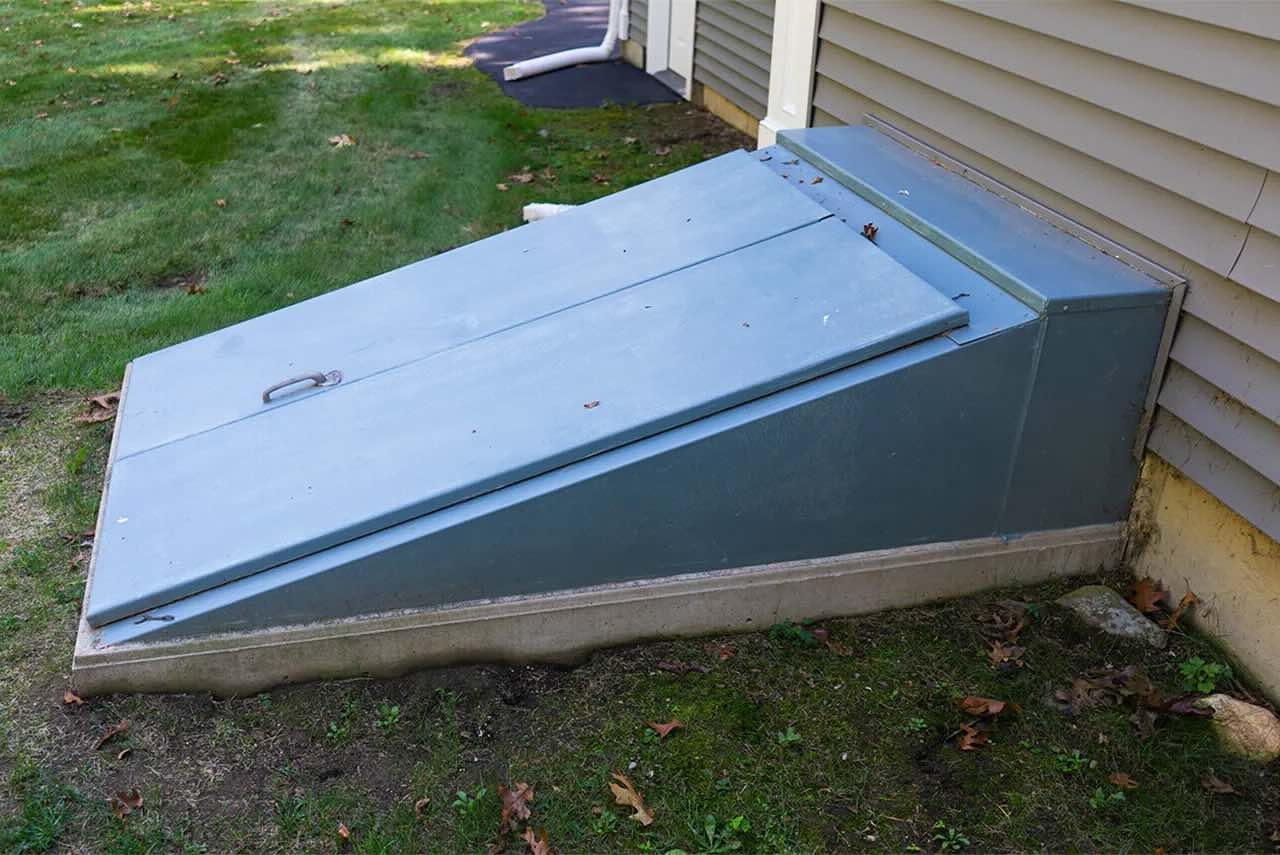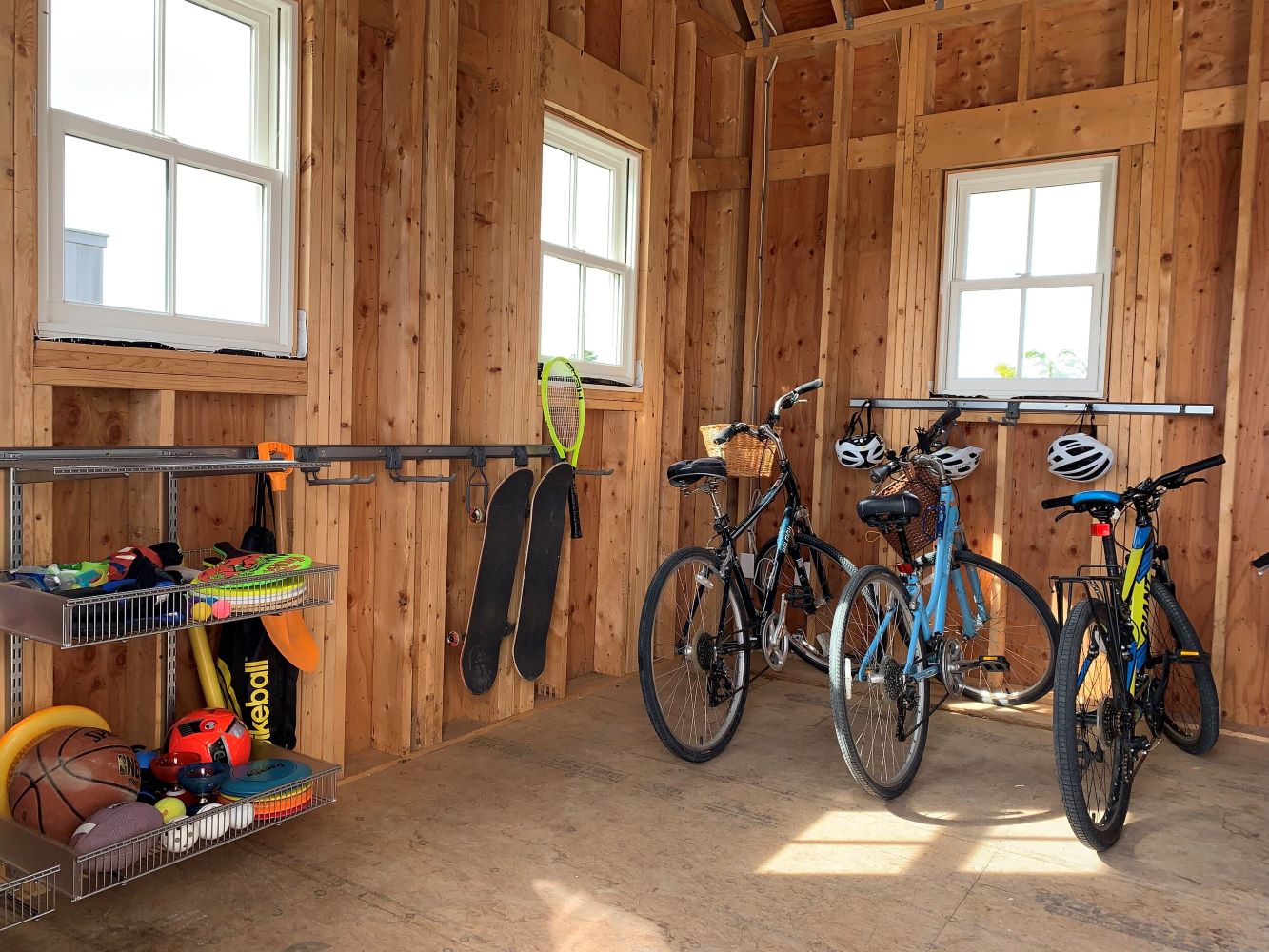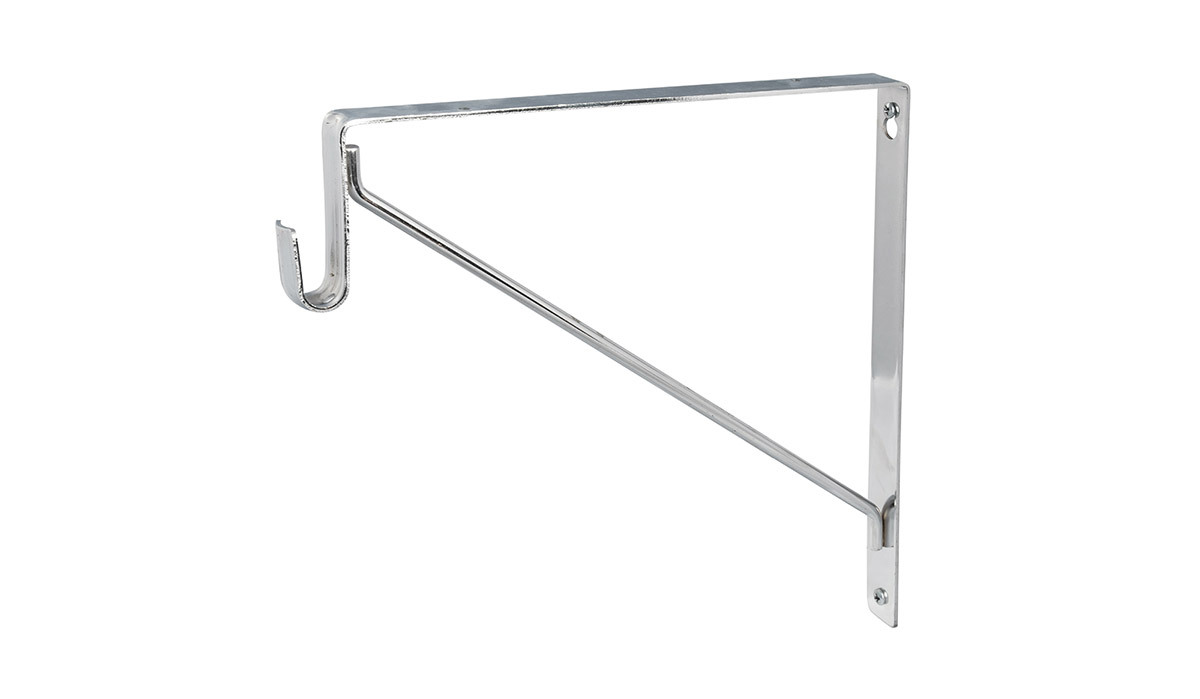Home>Create & Decorate>DIY & Crafts>Shed Base DIY: How To Build A Sturdy Foundation For Your Outdoor Storage
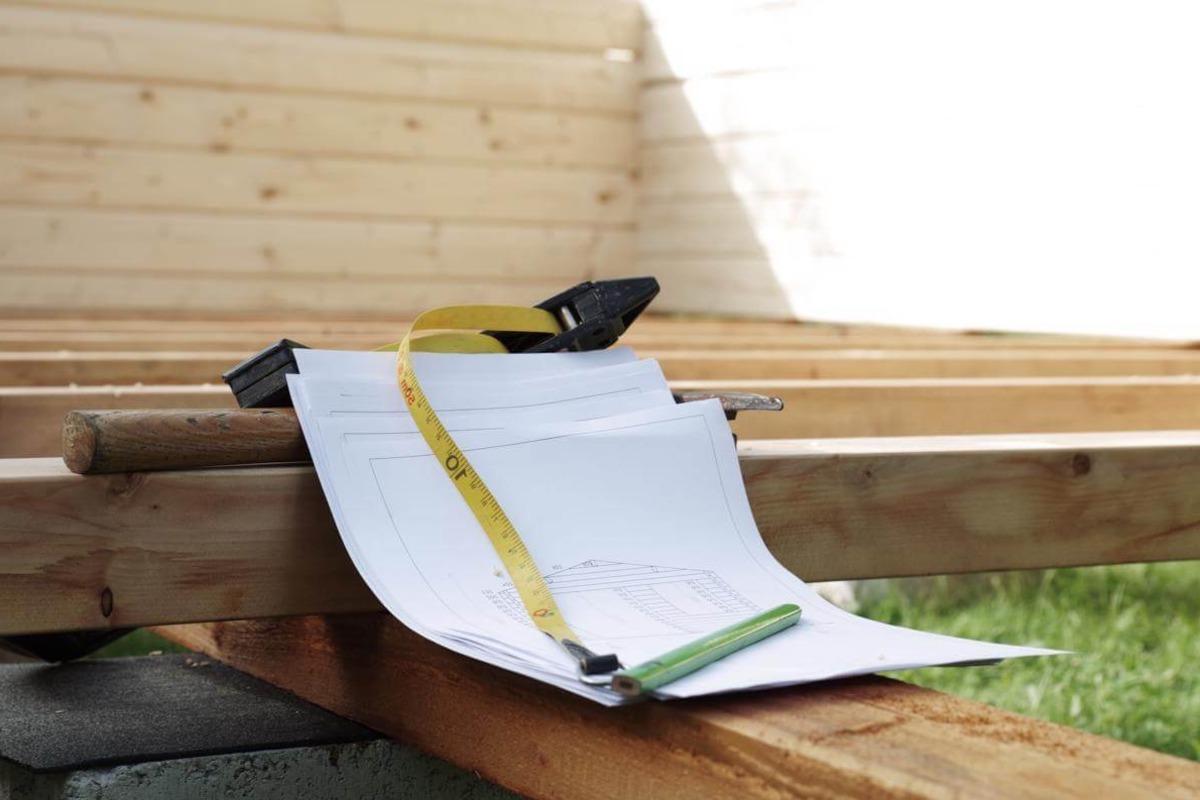

DIY & Crafts
Shed Base DIY: How To Build A Sturdy Foundation For Your Outdoor Storage
Published: February 25, 2024

Content Creator specializing in woodworking and interior transformations. Caegan's guides motivate readers to undertake their own projects, while his custom furniture adds a personal touch.
Learn how to create a durable shed base with our step-by-step DIY guide. Perfect for your outdoor storage needs. Discover expert tips and tricks!
(Many of the links in this article redirect to a specific reviewed product. Your purchase of these products through affiliate links helps to generate commission for Twigandthistle.com, at no extra cost. Learn more)
Introduction
Building a sturdy foundation for your outdoor storage shed is crucial for ensuring its longevity and structural integrity. A well-constructed shed base not only provides a level and stable platform for your storage unit but also helps to protect it from moisture and ground movement. Whether you're a seasoned DIY enthusiast or a novice looking to embark on your first outdoor project, constructing a solid shed base is a manageable and rewarding endeavor.
A well-designed shed base serves as the backbone of your outdoor storage space, offering a reliable platform to support the weight of the shed and its contents. By investing time and effort into creating a robust foundation, you can safeguard your belongings from potential water damage and structural instability. Additionally, a properly constructed shed base can contribute to the overall aesthetics of your outdoor area, enhancing the visual appeal of your property.
In this comprehensive guide, we will walk you through the step-by-step process of building a durable shed base. From selecting the ideal location and gathering the necessary materials to executing the construction and implementing essential finishing touches, we will cover every aspect of the project in detail. Whether you're planning to store gardening tools, outdoor equipment, or recreational items, a well-constructed shed base will provide a secure and organized space for your belongings.
By following the guidelines outlined in this article, you will gain the knowledge and confidence to embark on your shed base construction project. With careful planning, proper execution, and attention to detail, you can create a solid foundation that will stand the test of time, ensuring that your outdoor storage shed remains a functional and reliable asset for years to come. Let's dive into the planning and preparation phase to set the stage for a successful shed base construction endeavor.
Read more: How to Build a DIY Garage Foundation
Planning and Preparation
Before diving into the physical construction of your shed base, thorough planning and meticulous preparation are essential for a successful outcome. This initial phase sets the groundwork for the entire project, ensuring that you have a clear vision of the construction process and the necessary resources at your disposal.
Assessing Your Needs
Begin by assessing your storage requirements and the intended use of the shed. Consider the size and weight of the items you plan to store, as well as any additional space needed for maneuvering around the shed. Understanding your specific needs will help determine the dimensions and load-bearing capacity required for the shed base.
Checking Local Regulations
Check with your local building authorities or homeowner's association to ensure compliance with any regulations or restrictions regarding shed construction. Some areas may have specific guidelines regarding the size, location, and foundation requirements for outdoor structures. Adhering to these regulations will help prevent any potential issues in the future.
Selecting the Shed Base Type
Evaluate the available options for shed base materials, such as concrete, gravel, or pressure-treated timber. Each material offers distinct advantages in terms of durability, cost, and ease of installation. Consider the environmental factors in your area, such as soil composition and drainage, to determine the most suitable base type for your specific location.
Read more: How to Build a DIY Kitchen Sink Base
Creating a Detailed Plan
Draft a detailed plan for the shed base, including precise measurements, material requirements, and a step-by-step construction outline. This plan will serve as a roadmap throughout the project, guiding you through each phase of the construction process and ensuring that you stay organized and on track.
Acquiring Necessary Permits
If required by local regulations, obtain any necessary permits or approvals for the shed base construction. This may involve submitting plans to the relevant authorities and obtaining clearance before commencing the project. Securing the required permits in advance will help prevent potential delays or complications during the construction phase.
Budgeting and Sourcing Materials
Estimate the overall budget for the shed base construction, factoring in material costs, equipment rentals, and any additional expenses. Research local suppliers and hardware stores to source high-quality materials at competitive prices, ensuring that you have everything you need before initiating the construction process.
Securing Essential Tools
Gather the essential tools and equipment needed for the construction, including shovels, a level, a wheelbarrow, a tamper, and any specialized tools required for the chosen base material. Ensuring that you have the necessary tools on hand will streamline the construction process and contribute to the overall efficiency of the project.
By meticulously planning and preparing for the shed base construction, you will lay a solid foundation for the subsequent phases of the project. With a clear understanding of your storage needs, compliance with local regulations, and a well-defined construction plan, you can proceed with confidence into the next stage of the process: choosing the right location for your shed base.
Read more: How To Build Shed Foundation
Choosing the Right Location
Selecting the optimal location for your shed base is a critical decision that directly impacts the functionality and longevity of your outdoor storage space. Careful consideration of various factors will help ensure that the chosen site provides a stable and practical foundation for your shed. Here's a detailed exploration of the key considerations when choosing the right location for your shed base.
Assessing Ground Stability
Begin by evaluating the stability and firmness of the ground across your property. Look for a level area with minimal slope, as this will facilitate the construction process and contribute to the overall stability of the shed base. Avoid low-lying areas that are prone to water accumulation, as excess moisture can compromise the integrity of the base over time.
Sunlight and Accessibility
Consider the exposure to sunlight and accessibility of the chosen location. Opt for a spot that receives ample sunlight throughout the day, as this promotes natural drying and helps prevent moisture buildup around the shed. Additionally, ensure that the location is easily accessible, allowing convenient entry and exit for storing and retrieving items from the shed.
Proximity to Utilities
Take into account the proximity to utilities such as water, electricity, and drainage systems. Avoid constructing the shed base over underground utility lines or in close proximity to water sources, as this can pose safety hazards and may require costly adjustments in the future. Understanding the location of utilities will also facilitate any necessary connections to the shed in the future.
Landscape and Aesthetic Considerations
Evaluate the surrounding landscape and consider the visual impact of the shed base location. Aim to integrate the shed seamlessly into the existing environment, taking into account factors such as landscaping, neighboring structures, and overall aesthetic appeal. Harmonizing the shed base with the surrounding landscape contributes to a cohesive and visually pleasing outdoor space.
Legal and Regulatory Compliance
Ensure compliance with local building codes and regulations when selecting the shed base location. Familiarize yourself with any zoning restrictions, setback requirements, or property line considerations that may influence the placement of the shed. Adhering to these regulations will help prevent potential disputes and ensure a smooth and legally compliant construction process.
By carefully evaluating these factors and selecting a location that aligns with your specific needs and the requirements of the shed base, you can lay the groundwork for a successful and enduring outdoor storage solution. The chosen location will serve as the cornerstone of your shed base construction, providing a stable and functional platform for your storage needs. With the location secured, you can proceed to the next phase of the project: gathering the necessary materials and tools for the construction process.
Gathering Materials and Tools
Gathering the necessary materials and tools is a pivotal step in preparing for the construction of a sturdy shed base. By ensuring that you have all the essential components and equipment at your disposal, you can streamline the construction process and maintain a structured approach to the project. Here's a comprehensive overview of the materials and tools required for building a durable shed base.
Materials
-
Base Material: Depending on your chosen shed base type, acquire the necessary materials such as concrete mix, gravel, or pressure-treated timber. Ensure that the selected base material aligns with the specific requirements of your shed and the environmental conditions of the location.
-
Gravel or Stone Dust: If opting for a gravel base, procure a sufficient quantity of gravel or stone dust to provide a stable and well-draining foundation for the shed. Select high-quality aggregate materials that offer excellent load-bearing capacity and drainage properties.
-
Pressure-Treated Lumber: For wooden shed bases, obtain pressure-treated lumber in the appropriate dimensions to construct the frame and support structure. Prioritize the use of treated lumber to safeguard against decay, moisture damage, and termite infestation.
-
Concrete Mix and Reinforcement: If constructing a concrete base, acquire the required amount of concrete mix along with reinforcement materials such as rebar or wire mesh. Ensure that the concrete mix meets the strength and durability specifications for supporting the shed.
-
Landscaping Fabric: Consider incorporating landscaping fabric to prevent weed growth and promote drainage beneath the shed base. This permeable fabric helps maintain a stable base while inhibiting the intrusion of vegetation that could compromise the structure over time.
-
Fasteners and Hardware: Secure an assortment of fasteners, screws, nails, and hardware necessary for assembling the shed base components. Opt for corrosion-resistant fasteners to enhance the longevity and structural integrity of the base.
Tools
-
Shovels and Spades: Equip yourself with sturdy shovels and spades for excavating the site, moving base materials, and shaping the foundation. Select tools with ergonomic handles and durable construction to facilitate efficient soil manipulation.
-
Level and Measuring Tools: Utilize a reliable level, measuring tape, and carpenter's square to ensure precise alignment and accurate dimensions during the construction process. These tools are essential for achieving a level and uniform shed base.
-
Wheelbarrow or Concrete Mixer: Depending on the base material, a wheelbarrow for transporting gravel or a concrete mixer for preparing concrete mix can significantly expedite the construction process. These tools enhance efficiency and ease the handling of heavy materials.
-
Tamper or Plate Compactor: Acquire a tamper or plate compactor to compact the base material thoroughly, promoting stability and load-bearing capacity. Proper compaction is crucial for preventing settling and ensuring the longevity of the shed base.
-
Circular Saw or Miter Saw: If working with timber components, a circular saw or miter saw is indispensable for cutting pressure-treated lumber to the required dimensions with precision and accuracy.
-
Protective Gear: Prioritize safety by wearing appropriate protective gear, including gloves, safety goggles, and sturdy footwear, to safeguard against potential hazards during the construction process.
By assembling the requisite materials and tools outlined above, you can set the stage for a well-organized and efficient shed base construction endeavor. With careful preparation and attention to detail, you can proceed to the next phase of the project: building the base to provide a solid foundation for your outdoor storage shed.
Building the Base
With the necessary materials and tools at your disposal, you are ready to embark on the construction of the shed base. This phase involves the precise execution of the chosen base design, whether it's concrete, gravel, or pressure-treated timber. The following steps outline the process of building a sturdy and reliable base for your outdoor storage shed.
Excavation and Site Preparation
Begin by marking the perimeter of the shed base according to the precise dimensions outlined in your construction plan. Use stakes and string to establish clear boundaries for excavation. With the area demarcated, proceed to excavate the site to the required depth, ensuring uniformity and levelness across the entire base area. Remove any debris, rocks, or organic matter from the excavated area to create a clean and stable foundation for the shed base.
Frame Construction and Assembly
For wooden shed bases, construct the frame using pressure-treated lumber in accordance with the predetermined dimensions. Secure the frame components using appropriate fasteners, ensuring structural integrity and stability. Verify that the frame is square and level, making any necessary adjustments to achieve precise alignment. In the case of a concrete base, construct formwork to contain the concrete mix, ensuring that it conforms to the specified dimensions and layout.
Read more: How To Build A Shed Base On Grass
Base Material Placement
Once the frame or formwork is in place, proceed to fill the excavated area with the designated base material, whether it's gravel, stone dust, or concrete mix. Distribute the material evenly within the frame, maintaining a consistent depth and density throughout the base. Use a combination of hand tools and equipment, such as a wheelbarrow or concrete mixer, to transport and distribute the base material efficiently, ensuring thorough coverage and compaction.
Compaction and Leveling
After the base material is in place, utilize a tamper or plate compactor to compact the material thoroughly, promoting stability and load-bearing capacity. Pay close attention to achieving uniform compaction across the entire base, addressing any areas of unevenness or soft spots. Use a level and straight edge to verify the evenness of the base surface, making adjustments as needed to achieve a uniform and level foundation for the shed.
Integration of Drainage Elements
If incorporating drainage elements such as landscaping fabric or perforated pipes, ensure that these components are integrated seamlessly into the base structure. Position landscaping fabric beneath the base material to inhibit weed growth and promote effective drainage. If utilizing a gravel base, consider adding a layer of stone dust to enhance drainage properties and prevent shifting of the base material over time.
By meticulously following these steps, you can construct a robust and stable base for your outdoor storage shed, setting the stage for the next phase of the project: leveling and compacting the base to ensure its long-term durability and functionality.
Leveling and Compacting the Base
Once the base material is in place and the initial construction phase is complete, the critical process of leveling and compacting the base begins. This phase is essential for ensuring the stability, load-bearing capacity, and long-term durability of the shed base. By meticulously leveling the surface and compacting the base material, you can create a solid foundation that will withstand the test of time and provide a reliable platform for your outdoor storage shed.
Read more: Sloped Shed Foundation: A DIY Guide
Leveling the Surface
Using a high-quality level and straight edge, meticulously assess the evenness of the base surface. Address any areas of unevenness or irregularities by redistributing the base material and making precise adjustments to achieve a uniform plane. Paying close attention to the leveling process is crucial for preventing potential structural issues and ensuring that the shed sits securely on the base without any undue stress points.
Compacting the Base Material
Utilize a tamper or plate compactor to compact the base material thoroughly, promoting stability and load-bearing capacity. Apply consistent pressure across the entire surface, focusing on achieving uniform compaction to minimize the risk of settling or shifting over time. Proper compaction is paramount for preventing the formation of voids within the base material and enhancing its overall structural integrity.
Verifying Evenness and Stability
After leveling and compacting the base material, conduct a comprehensive assessment of the surface to verify its evenness and stability. Run the level and straight edge across the base, checking for any deviations or irregularities that may compromise the integrity of the foundation. Address any areas requiring additional attention, ensuring that the entire base surface meets the specified leveling and compaction standards.
Ensuring Long-Term Durability
Thoroughly leveling and compacting the base material is a fundamental step in ensuring the long-term durability and functionality of the shed base. By meticulously attending to the evenness and stability of the surface, you can mitigate the risk of structural issues and create a reliable foundation that will support the shed and its contents with unwavering stability.
Read more: How To Build A Base Cabinet
Setting the Stage for the Next Phase
With the base leveled and compacted to precision, you have laid the groundwork for the subsequent phases of the shed base construction. The meticulous attention to detail in this phase sets the stage for the seamless integration of drainage elements and the implementation of essential finishing touches, ensuring that the shed base is primed for long-term resilience and performance.
By prioritizing the leveling and compaction of the base material, you are one step closer to completing a robust and enduring foundation for your outdoor storage shed. This meticulous approach sets the stage for the seamless integration of drainage elements and the implementation of essential finishing touches, ensuring that the shed base is primed for long-term resilience and performance.
Adding Drainage
Incorporating effective drainage elements into the shed base is a crucial step in ensuring the long-term stability and resilience of the structure. Proper drainage helps mitigate the risk of water accumulation, moisture retention, and soil displacement, safeguarding the integrity of the shed base and its surroundings. By implementing strategic drainage solutions, you can enhance the functionality and durability of the base, providing a reliable platform for your outdoor storage needs.
Permeable Landscaping Fabric
One effective method of promoting drainage beneath the shed base involves the use of permeable landscaping fabric. This specialized fabric serves as a barrier between the base material and the underlying soil, inhibiting weed growth and promoting optimal drainage. By integrating landscaping fabric into the base construction, you can prevent the intrusion of vegetation that could compromise the stability and integrity of the shed foundation over time.
Perforated Drainage Pipes
In areas prone to excessive moisture or water accumulation, the inclusion of perforated drainage pipes can significantly enhance the drainage capabilities of the shed base. These pipes are strategically positioned beneath the base material, allowing for the efficient removal of excess water and preventing the buildup of hydrostatic pressure. By facilitating the swift evacuation of water from the base area, perforated drainage pipes contribute to the overall resilience and longevity of the shed foundation.
Read more: How To Build A Table Base
Stone Dust Layer
For gravel-based shed foundations, incorporating a layer of stone dust can bolster the drainage properties of the base. Stone dust acts as a permeable medium that promotes effective water percolation and prevents the shifting of the gravel base material. By adding a carefully distributed layer of stone dust, you can enhance the overall drainage capacity of the base, minimizing the risk of water retention and ensuring the stability of the shed foundation.
Ensuring Effective Integration
When implementing drainage elements, meticulous attention to detail is essential to ensure their seamless integration into the shed base. Position landscaping fabric with precision, covering the entire base area and securing it in place to prevent displacement. If incorporating perforated drainage pipes, verify their alignment and connectivity to facilitate efficient water drainage. Additionally, when adding a layer of stone dust, ensure uniform distribution to optimize its drainage-enhancing properties.
By thoughtfully integrating these drainage elements into the shed base, you can fortify its resilience against water-related challenges, such as moisture buildup and soil erosion. The strategic implementation of permeable landscaping fabric, perforated drainage pipes, and stone dust layers contributes to the overall stability and functionality of the shed base, ensuring that it remains a dependable and enduring foundation for your outdoor storage needs.
Finishing Touches and Maintenance
With the shed base construction nearing completion, attention to finishing touches and ongoing maintenance is essential to ensure the longevity and functionality of the outdoor storage space. The final phase of the project involves implementing key elements that enhance the aesthetics, security, and durability of the shed base, while also establishing a maintenance routine to preserve its integrity over time.
Surface Sealing and Protection
For concrete shed bases, applying a protective sealant can safeguard the surface against moisture penetration and environmental wear. A high-quality concrete sealant creates a barrier that prevents water intrusion, minimizes surface erosion, and enhances the overall resilience of the base. By sealing the concrete surface, you can prolong its lifespan and maintain a visually appealing foundation for the shed.
Read more: DIY Garage Shed Plans Guide
Anchor Installation
Securing the shed to the base with robust anchors or anchor plates is crucial for enhancing its stability and resistance to external forces. By anchoring the shed securely to the base, you can mitigate the risk of displacement during inclement weather and ensure that the structure remains firmly grounded. Implementing a reliable anchoring system contributes to the overall safety and structural integrity of the shed.
Routine Inspection and Maintenance
Establishing a regular inspection and maintenance schedule is imperative for preserving the condition of the shed base. Periodically assess the base for signs of wear, settlement, or damage, addressing any issues promptly to prevent further deterioration. Additionally, maintain the surrounding area by keeping vegetation in check and ensuring proper drainage to safeguard the integrity of the shed base.
Protective Coating for Timber Bases
For wooden shed bases, applying a protective coating or wood preservative is essential to shield the lumber from moisture, decay, and insect infestation. A high-quality wood preservative penetrates the timber, providing long-lasting protection against environmental elements and extending the lifespan of the base. Regular reapplication of the protective coating ensures ongoing preservation of the timber components.
Landscaping and Integration
Integrating the shed base seamlessly into the surrounding landscape enhances the overall visual appeal of the outdoor space. Consider incorporating landscaping elements such as gravel borders, decorative stones, or plantings to create a cohesive and aesthetically pleasing environment. Harmonizing the shed base with the landscape contributes to a polished and inviting outdoor storage area.
Read more: How to Build a DIY Hutch
Ongoing Care and Preservation
Regularly clean the shed base to remove debris, dirt, and organic matter that can compromise its integrity. Utilize gentle cleaning methods to maintain the surface without causing damage. Additionally, address any drainage issues promptly, ensuring that water is effectively diverted away from the base to prevent moisture-related issues.
By attending to these finishing touches and implementing a proactive maintenance regimen, you can ensure that the shed base remains a durable, secure, and visually appealing foundation for your outdoor storage needs. The combination of protective treatments, anchoring systems, routine maintenance, and aesthetic integration culminates in a well-maintained and resilient shed base that serves as a reliable asset for years to come.
Conclusion
In conclusion, the construction of a sturdy shed base is a fundamental aspect of creating a reliable and enduring outdoor storage solution. By meticulously planning, preparing, and executing each phase of the construction process, you can establish a solid foundation that safeguards your belongings and enhances the functionality of your outdoor space.
The journey begins with thorough planning and preparation, where careful consideration of storage needs, local regulations, and material selection sets the stage for a successful construction endeavor. Choosing the right location for the shed base is paramount, as it directly influences the stability, accessibility, and aesthetic integration of the storage space within the outdoor environment.
Gathering the necessary materials and tools, followed by the precise execution of the base construction, lays the groundwork for a robust and resilient foundation. The meticulous attention to leveling, compacting, and integrating drainage elements ensures that the shed base is primed for long-term durability and performance.
As the construction nears completion, the implementation of finishing touches and ongoing maintenance practices further enhances the resilience and visual appeal of the shed base. From protective treatments and anchoring systems to routine inspection and landscaping integration, each element contributes to the overall functionality and longevity of the outdoor storage space.
In essence, the construction of a sturdy shed base is a testament to the commitment to quality, durability, and practicality. By investing time and effort into creating a reliable foundation, you can enjoy the peace of mind that comes with a secure and organized outdoor storage solution. Whether housing gardening tools, outdoor equipment, or recreational items, a well-constructed shed base serves as a dependable asset that enriches the functionality and aesthetics of your property.
As you embark on your shed base construction journey, remember that attention to detail, proactive maintenance, and a thoughtful approach to integration with the surrounding landscape are key elements in creating a resilient and visually appealing outdoor storage space. With the knowledge and insights gained from this comprehensive guide, you are well-equipped to embark on your shed base construction project with confidence and precision.

